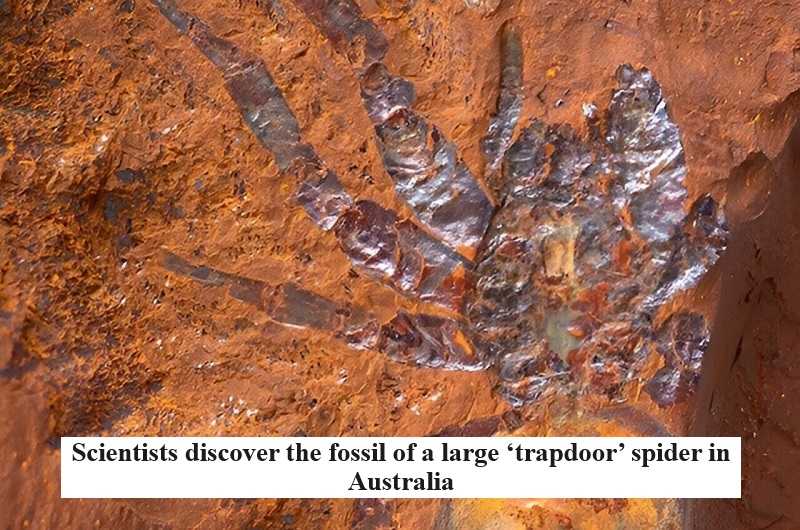
Scientists have unearthed the fossil of a large ‘trapdoor’ spider in Australia, marking the fourth giant spider fossil discovery in the country. However, this is no ordinary fossilized spider; it is the world’s first fossil belonging to the large brush-footed trapdoor spider family known as Barychelidae. This newly identified species existed during the Miocene epoch, approximately 11 to 16 million years ago, and has been officially named Megamonodontium mccluskyi.
The research was led by Dr. Matthew McCurry, a paleontologist from the Australian Museum (AM) and the University of New South Wales (UNSW).
The spider fossil was found in McGraths, New South Wales, a fossil site known for its iron-rich rock called “goethite.” Resembling Monodontium, this spider fossil is five times larger than the typical species. It was named after Dr. Simon McClusky, the individual who discovered the specimen.
This discovery holds immense significance due to the scarcity of fossilized spiders found in Australia. Dr. McCurry highlighted that only four spider fossils have ever been discovered across the entire continent, which has posed challenges for scientists seeking to comprehend their evolutionary history. Thus, this finding fills a crucial gap in understanding the past and sheds light on spider extinction.
The closest living relative of this fossil now inhabits wet forests from Singapore to Papua New Guinea, indicating that the group once occupied similar environments in mainland Australia but subsequently became extinct as the continent became more arid.
Dr. Robert Raven, an arachnologist from the Queensland Museum who supervised the study, emphasized that this discovery not only marks the largest fossil spider ever found in Australia but also the first fossil of the Barychelidae family found globally.
While there are approximately 300 species of brush-footed trapdoor spiders alive today, they are not commonly found as fossils, possibly due to their habit of spending extended periods inside burrows, making them less likely to be preserved.
This discovery holds the potential to provide insights into how Australia’s landscape transformed over time, particularly as the environment became progressively arid. The absence of Monodontium or Megamonodontium spiders in present-day Australia suggests that aridification during and after the Miocene epoch played a role in locally eliminating certain spider lineages.

Post Your Comments